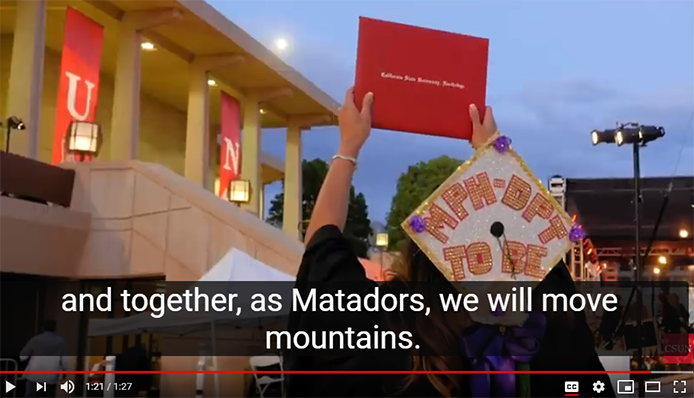 Captions allow people who do not have access to sound to engage with video and audio content. Captioning videos help students who are deaf or hard-of-hearing participate in classwork involving videos. Captioning is part of the Accessible Technology Initiative because videos have become an integral way to share information with students, faculty, staff, and visitors.
Captions allow people who do not have access to sound to engage with video and audio content. Captioning videos help students who are deaf or hard-of-hearing participate in classwork involving videos. Captioning is part of the Accessible Technology Initiative because videos have become an integral way to share information with students, faculty, staff, and visitors.
Captioning also supports the concept of universal design. Captions improve comprehension for viewers with various:
- Learning styles, especially for visual learners.
- Helpful for topics that are complex or contain technical terms.
- Reduce language barriers by making it easier to understand speakers with accents or content not in the viewer’s native language.
- Noisy environment or unable to play sound.
- Sound quality of the video is poor, captions give the viewer access to the content.
Captions can improve engagement across viewers. One study found that captioned videos were viewed 38% longer. Another ongoing study at SFSU has found that captioned videos improve both grades and student participation across all students.
Captioning terms
- Captioning the process of converting the narration, dialogue, music and sound effects of video production into text that is displayed on a television screen.
- Closed captioning are captions that can be turned off and on by the user.
- Open/burned captioning are captions that remain on screen and cannot be turned off.
- Real-time captioning captions are simultaneously prepared and transmitted at the same time. If you will be teaching or presenting live via video, using a videoconferencing tool like Zoom, you’ll want to have someone else handle the captions for you. Learn more about Captions in Zoom. Email NCOD: Deaf and Hard of Hearing Services ncod@csun.edu to request live captioning.
- Subtitles captions displayed at the bottom of a movie or television screen that translate or transcribe the dialogue or narrative
- Transcripts are text versions of multimedia files. Transcripts can be used for videos or audio recordings. Transcripts are typically useful for users to download and have access to the text of the media.
- Audio: Transcripts of an audio file or podcast
- Audio descriptions describe the visuals that are portrayed in the video. Examples of what can be included in an audio description are if the video includes diagrams or charts.
- YouTube Video "Captions vs Subtitles: What is the difference?"
Why is it important?
Video Credit: University of Washington DO-IT Center Captions - Improving Access to Postsecondary Education (total length 7:42 mins)









